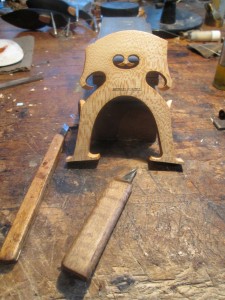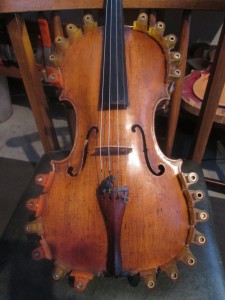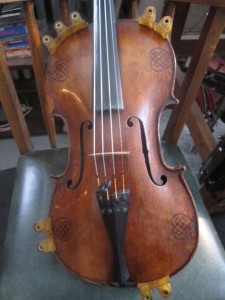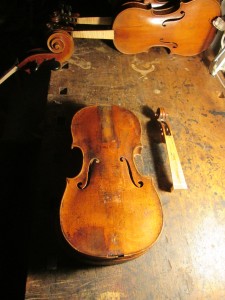 Jeff is a prominent cellist….and a prominent teacher…..and one of the most passionate searchers for sound I have ever met. Its a compelling challenge to work on all of his fine, varied cellos that range from old to new….big/dark to smaller/brighter. Add this all the stressful variations that seasons, travel and wear and tear provide and its a delicate balancing act.
Jeff is a prominent cellist….and a prominent teacher…..and one of the most passionate searchers for sound I have ever met. Its a compelling challenge to work on all of his fine, varied cellos that range from old to new….big/dark to smaller/brighter. Add this all the stressful variations that seasons, travel and wear and tear provide and its a delicate balancing act.
Some demand work inside work ( i e bass bar etc) …or work from the outside ( bridge,post etc) …neck angle adjustments….truly the whole spectrum of ways to enhance the sound and get every ounce of punch and depth that each instrument has to give.
The bridge pictured was cut for a fine Sgarabotto cello that he was using to play the Bach suites at Bargemusic in NY.


